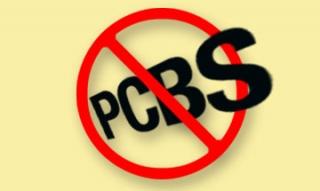Background
The city Department of Education in January 2017 fulfilled its agreement to clear 883 public school buildings of light fixtures containing the probable carcinogen polychlorinated biphenyls, or PCBs, that had threatened the well-being of students and teachers.
The UFT had been outspoken regarding the need to remove and replace the PCB light fixtures. In May 2013, the Department of Education agreed to cut in half its time frame for replacing them, with a scheduled completion date of the end of 2016 reached as part of the settlement of a federal lawsuit filed by New York Communities for Change. The DOE had previously insisted that it needed through 2021 to finish the work. After years of pressure from parents, the UFT and other groups — and after disturbing incidents of dripping and smoking ballasts — the fixtures were removed five years ahead of the city’s original schedule in January 2017.
In addition to light fixtures, PCBs can be found in caulk. Caulk containing PCBs was used in many buildings in the 1950s through the 1970s and commonly used to seal the joints of brick, masonry, stone, and metal window frames.
PCB Caulking
When caulk with PCBs is disturbed, it may produce dust that contains PCBs. Activities that can disturb PCB containing caulk include construction and renovation. As such, the Division of School Facilities and the School Construction Authority has developed and implemented dust control practices to minimize the potential exposure to PCB-containing dust during construction.
In construction projects, all caulking is tested for PCBs if it will be disturbed during construction. In addition, after the completion of renovation or demolition that involves the disturbance of exterior PCB caulking material, soil adjacent to the school building is sampled by a qualified environmental professional to test for the presence of PCBs and remediated if required.
DSF/SCA employs the same dust control measures for PCBs as is used for lead dust control. The protocols require rigorous dust control measures during the work, followed by cleaning and inspection at the conclusion of every work shift.
PCB Light Fixtures
PCB Containing Light fixtures have been removed in 883 New York City public schools by the end of 2016. Though it is very unlikely you will encounter PCB containing light fixtures in your school anymore, it is still important to recognize the signs especially if you work or live in an older building.
Warning signs
Below is a short list of warning signs that may indicate a PCB leak or problem with the fluorescent light fixtures in your school:
- Burned-out lights that do not work even if the bulbs are changed.
- Evidence of brown, oily stains on the light fixture itself or on the glass lens of the fluorescent light fixture.
- Evidence of oil stains on floor tiles or carpeting beneath the lighting fixture.
- Past episodes of smoke or burning odors that required the custodian to service the lights.
- Past episodes in which the custodian had to remove a light fixture or take it apart to replace electrical parts.
Ventilation
An inoperable ventilation system or closed windows will exacerbate any problems. Is the ventilation system in your school turned on and working? If outside air is supplied via windows, are the windows open as much as possible, weather permitting?
In an emergency
The following are emergency steps to take if a fluorescent light fixture begins to smoke, emit an electrical burning odor or drip oil:
- If a fluorescent light fixture begins to smoke, if oil is dripping from the light or if you smell an electrical burning odor, the room should be evacuated immediately.
- Follow the notification procedures for your school and also notify your UFT chapter leader who in turn will notify the union.
- Arrangements will be made for an environmental consultant to inspect the light fixture, including the interior housing and the ballast.
- The room should be ventilated and there should be a custodial cleaning before it is safe to occupy.
Report what you find
Please follow the reporting procedures for your school to report any of the above checklist conditions to your school custodian and to your chapter leader who, in turn, will notify the UFT Safety and Health representative at your UFT borough office.
Useful resources
The NYC School Construction Authority (SCA) actively maintains several lists related to its work inspecting and replacing light fixtures and their pilot studies:
- SCA/EPA PCB Program Overview
- Completed Lighting Fixture Replacement
- EPA Press Release on the Removal of PCB Lighting
Information on PCBs
- UFT: PCBs in Fluorescent Light Fixtures Q&A
- EPA: Polychlorinated Biphenyl (PCB)-Containing Fluorescent Light Ballasts (FLBs) in School Buildings
- EPA: Polychlorinated Biphenyls (PCBs) in School Buildings
- UFT: Presentation on PCBs in School
